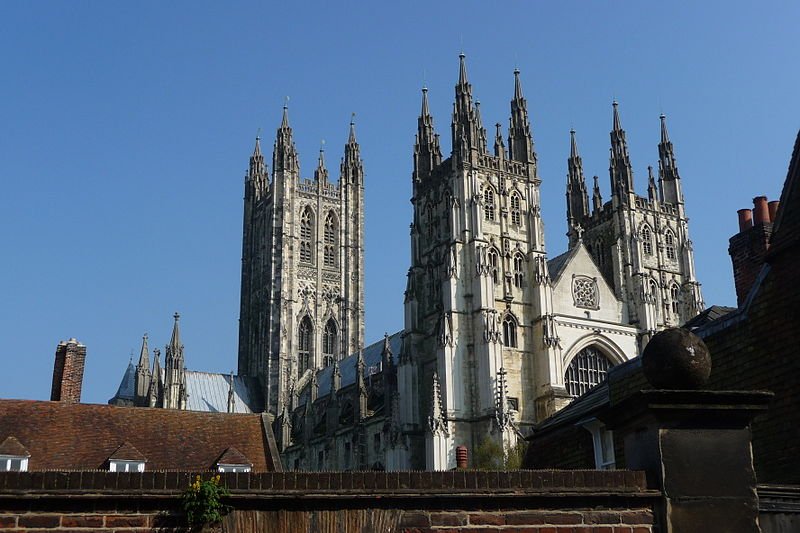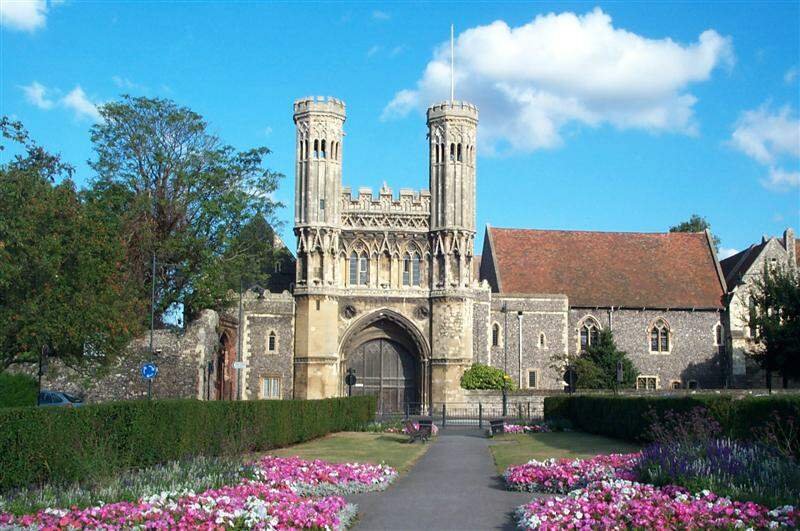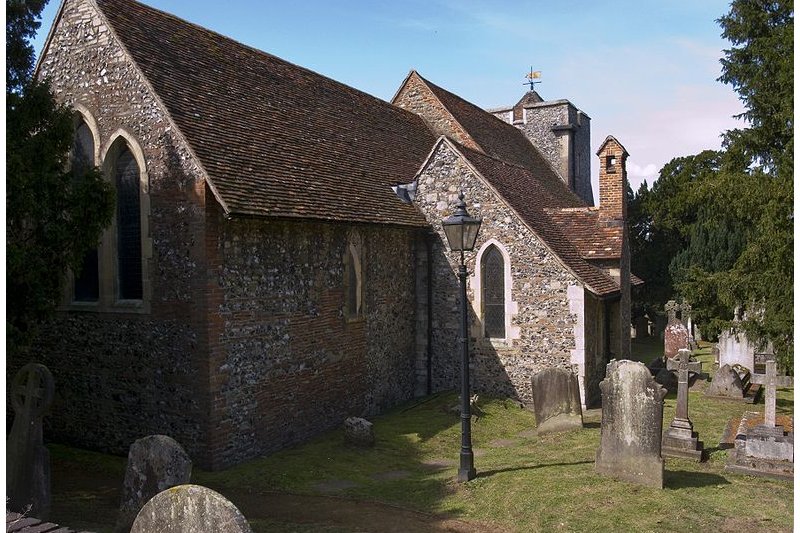 Canterbury Cathedral: Source: https://commons.wikimedia.org/wiki/File:Canterbury-Cathedral.JPG
Canterbury Cathedral: Source: https://commons.wikimedia.org/wiki/File:Canterbury-Cathedral.JPGAuthor: TristanAidan

Canterbury is a city in Kent, in Southeast England. Today Canterbury is a historic cathedral city and seat of the Archbishop of Canterbury. It covers 119.2 sq mi (308.84 sq km) and has a population of 153,000 people (2012 estimate).
Canterbury was established by the ancient Britons, the Celtic tribe that lived in the area before the arrival of the Romans. When the Romans conquered the area in the 1st century AD, the renamed the settlement Durovernum Cantiacorum. Over time, the village became known in Old English as Cantwareburh, which means "stronghold of Kent's people". The name Canterbury evolved from this name.
In AD 597, King Æthelberht was converted by Benedictine monk Augustine to Christianity. With the Kingdom of Kent Christianized, Augustine established the episcopal see in the city and become the first Archbishop of Canterbury. The Archbishop of Canterbury becomes the head of the Church of England, and by extension the head of the worldwide Anglican Communion.
 St Augustine's Abbey, Canterbury: Source: https://commons.wikimedia.org/wiki/File:Augustine_Abbey.jpg
St Augustine's Abbey, Canterbury: Source: https://commons.wikimedia.org/wiki/File:Augustine_Abbey.jpgAuthor: Willhsmit

Today the City of Canterbury has many historic attractions including perhaps the oldest school in England. Parts of the city wall built during Roman times are still visible. In 1988, Canterbury Cathedral, St Augustine's Abbey and St Martin's Church were inscribed by UNESCO as a World Heritage Site.
Visiting Canterbury
You can reach Canterbury by train from London. It has two stations, the Canterbury East and Canterbury West stations, located 8 min and 4 min from the city center by foot. There are high speed train services from St Pancras Station in London that takes just under an hour to arrive. For more details, visit https://www.southeasternrailway.co.uk/ St Martin's Church, Canterbury: Source: https://commons.wikimedia.org/wiki/File:Canterbury_St_Martin_close.jpg
St Martin's Church, Canterbury: Source: https://commons.wikimedia.org/wiki/File:Canterbury_St_Martin_close.jpgAuthor: Oosoom

Places of Interest in Canterbury
- Canterbury Castle: 11th century Norman castle, not in ruins.
- Canterbury Cathedral (World Heritage Site)
Seat of the Archbishop of Canterbury. It is the site where Archbishop Thomas Becket was murdered in 1162. He was subsequently canonized as St Thomas of Canterbury by both the Anglican Communion and Catholic Church, and makes Canterbury Cathedral a pilgrimage site. - Canterbury Roman Museum: Museum on the history of the Romans in the settlement.
- Canterbury Tales Visitor Attraction: Reconstruction of 14th century England within the readapted historic building that was formerly St Margaret's Church.
- Museum of Canterbury: Museum recounting the history of Canterbury from Roman times to present day.
- Royal Museum and Art Gallery: Victorian-era building locally known as the Beaney Institute. It displays decorative arts and pictures, and an art gallery with paintings on Canterbury. Adjacent to it is the Buffs Museum, recounting the history of England's oldest infantry regiments.
 Royal Museum and Art Gallery, locally known as the Beaney Institute: Source: https://commons.wikimedia.org/wiki/File:Beaney_Institute_002.jpg
Royal Museum and Art Gallery, locally known as the Beaney Institute: Source: https://commons.wikimedia.org/wiki/File:Beaney_Institute_002.jpg
Author: Storye book
- St Augustine's Abbey (World Heritage Site)
Benedictine abbey commemorating the monk who introduced Christianity to King Æthelberht of Kent. - St Martin's Church (World Heritage Site)
Oldest parish church in England that is still in use. It dates back to the 6th century, when it was the private chapel of Queen Bertha of Kent. - West Gate Museum: Museum documenting the history of the West Gate Tower and Canterbury itself.
Canterbury is  on the Map of cities in England
on the Map of cities in England
 Latest updates on Penang Travel Tips
Latest updates on Penang Travel Tips
Map of Ceremonial Counties of England

Copyright © 2003-2025 Timothy Tye. All Rights Reserved.

 Go Back
Go Back